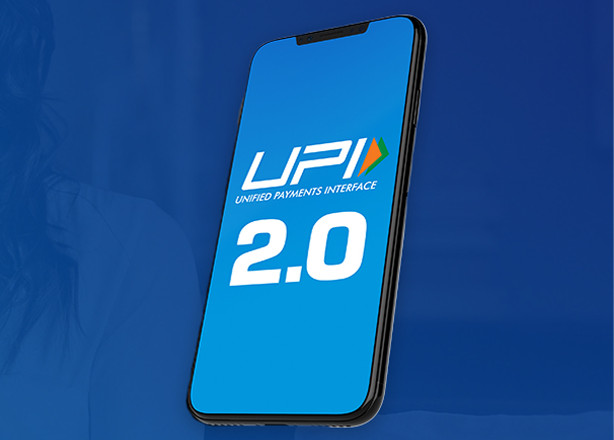
National Payments Corporation of India (NPCI) has finally launched Unified Payments Interface (UPI) 2.0 with new and upgraded features in an aim to ease the digital transaction for users, after a delay of several months. This includes one time mandate with block functionality, option to link Over-Draft (OD) account, Invoice in the Inbox, Signed Intent / QR and it has finally increased the UPI per transaction cap to 2 lakh.
Key features of UPI 2.0
- One time mandate with block functionality
With this feature, consumer can pre-authorise a transaction and block the funds in his account for a debit to be initiated later. UPI Mandate can be used in scenarios where money is to be paid later after obtaining the service; however the money in the account gets blocked instantaneously.
The customer’s account shall get debited when the UPI Mandate is executed by the merchant or payee. The mandate is digitally signed and stored at customer’s account holding bank and also with customer’s PSP bank (app providing bank). During the debit, the customer’s account holding bank and customer’s PSP bank need to validate the digital signature and verify the parameters.
- Link Over-Draft (OD) account in UPI
Currently savings and Current account addition is permissible in UPI. Now, with this additional feature, the user can also link an overdraft account provided he/she is found eligible to avail an OD by his/her bank. For any OD accounts, whenever a customer needs to check balance of his OD account, customer’s bank shall return 2 balances i.e. available & actual/usable balance. All UPI Apps need to display the same.
- Digital invoice in the Inbox (View attachment & pay)
Using this feature customer can check/verify the invoice or attachment prior to authorizing the payment via a secure link received in the collect/intent message. To start with, the facility can be availed by verified merchants.
- Signed Intent / QR payments
Signing of Intent / QR provides more security while making payment by the customer. Banks shall convert software based UPI QR codes (dynamic and static) by December 31, 2018 and physical UPI QR codes (static) by March 31, 2019.
UPI 2.0 members include State Bank of India (SBI), HDFC Bank, Axis Bank, ICICI Bank, IDBI Bank, RBL Bank, YES Bank, Kotak Mahindra Bank, IndusInd Bank, Federal Bank and HSBC.
